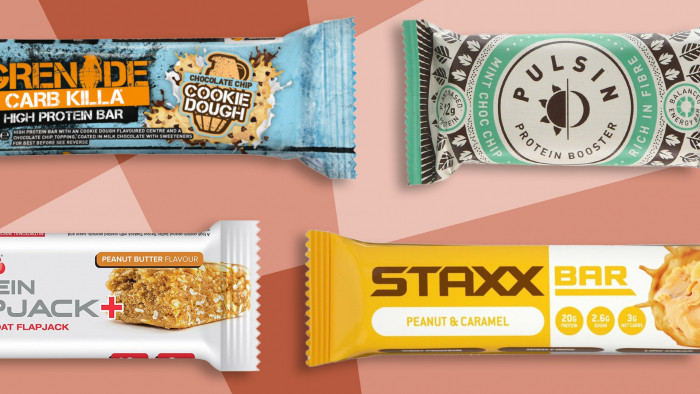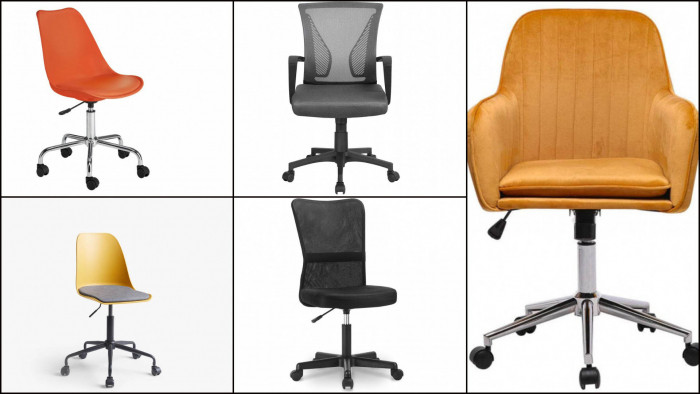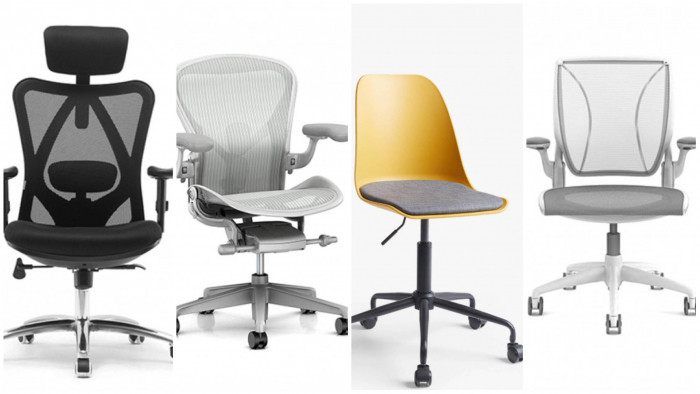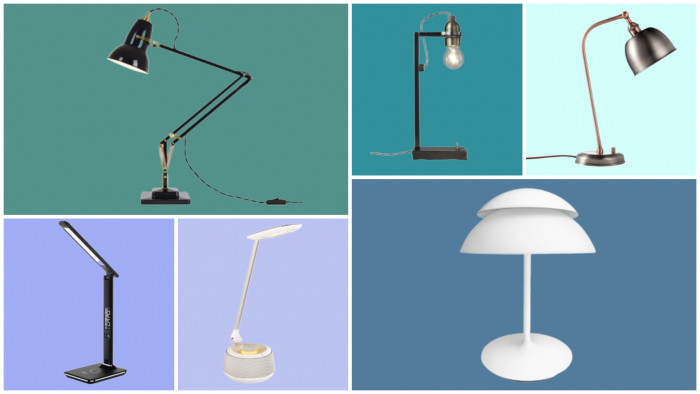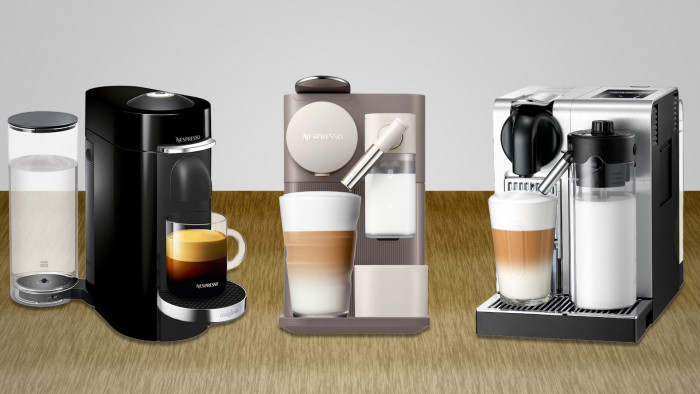Best electric toothbrush: the best toothbrushes revealed
Get cleaner, healthier, whiter teeth with our pick of the best electric toothbrush.

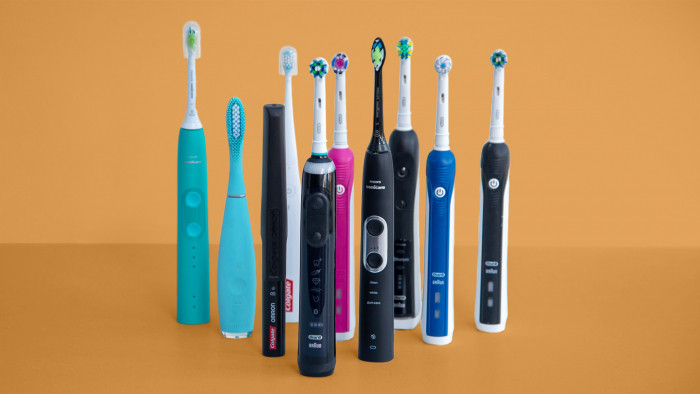
If you want to smile with confidence – and keep your pearly whites well into old age – it’s worth ditching your manual toothbrush and getting one of the best electric toothbrushes instead.
Going electric is not just gentler on your precious enamel, it'll do all of the hard work for you so you can flash a bright-white, clean set of gnashers with little effort.
There's a bewildering selection of electric
toothbrushes available to buy, from budget brushes to those that speak to your
smartphone and offer more brushing modes than you have teeth.
All electric toothbrushes tend to produce better results than manually scrubbing, but the real differences start to tell in our tests. We spent the last three weeks putting the latest electric toothbrushes through their paces to find the best, no matter what your budget.
Below you can read what we liked and disliked with all the toothbrushes we tested but, for clarity, the best toothbrush for value we tested was the Colgate Omron ProClinical 250+. The best toothbrush overall was the Oral-B Genius 9000.
Best electric toothbrush: value and overall
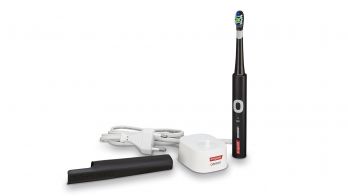
Electric toothbrushes don’t come much cheaper than the simple sonic Colgate Omron ProClinical 250+. Despite the low cost of this electric toothbrush, it’s a capable cleaner, although you may need to focus on some areas to get a thorough clean. We love the tongue cleaner and smart clip-on case, too.

Well-priced and shipped with a tonne of extra brushes and a charging travel case, the Oral-B Genius 9000 is our top choice. Its powerful cleaning action made light work of our tests, and there’s a huge choice of cleaning modes to keep all parts of your mouth clean.
Here are the 10 models tested.
- Best hair dryers for every budget
Best electric toothbrush

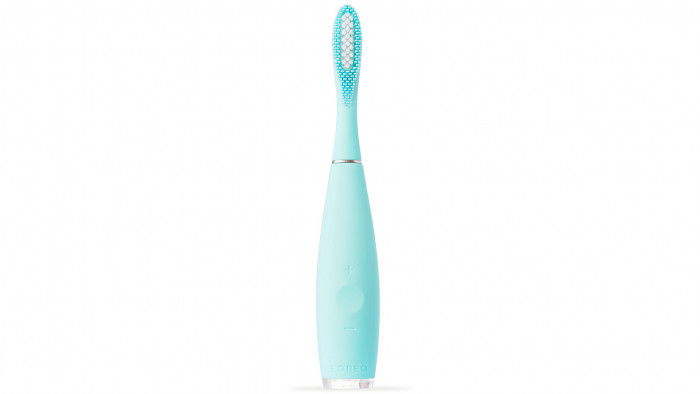
The Foreo ISSA 2 is all about longevity. Its battery can last for up to 365 days and its brush heads are designed to last for up to six months. The main sonic brush has 16 selectable intensity settings, there’s an integrated brush timer, and it ships with a soft carry pouch for travel.

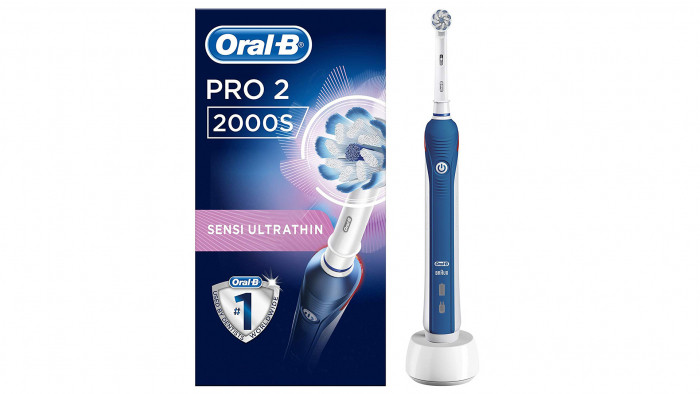
The ‘S’ in the model name denotes that the Oral-B Pro 2 2000S is an electric toothbrush that ships with a single sensitive brush head. The main brush handle is standard fare: there are two cleaning modes (gum care and clean) and there’s a pressure sensor and brush timer built in.


The most powerful sonic toothbrush, Philips Sonicare ProtectiveClean 6100, has BrushSync technology. Connect a brush head and the best cleaning mode and power option are selected automatically, plus you’re told when you need to change the head. You can override with a choice of three cleaning modes (clean, white and gum) and three power settings. The set includes a standard travel case, plus there’s a pressure sensor and brush timer built in.

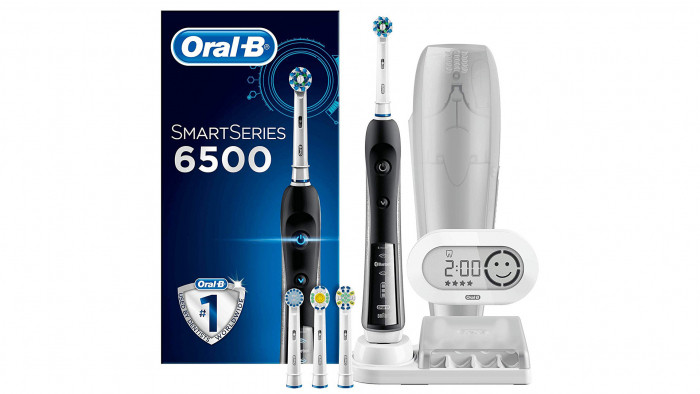
The Oral-B SmartSeries 6500 oscillating brush has Bluetooth connectivity, so you can use the app to train yourself to brush better. With the Wireless SmartGuide (a clock-like device) you can see which of the five modes you’re in (from clean to gum care) and it acts as a brush timer, too. The handle has a pressure sensor, and you get three brushes in the box, a handy stand/charger and a basic travel case.


We're still early in our test with this one, but we think it will be hard to knock it off of the top spot. It's simply the best toothbrush we have tried so far, packed with innovative tech that helps you clean your teeth in the best way possible. It is also app enabled and the app aids your brushing, rather than just being there as a gimmick. Battery life is great, too.

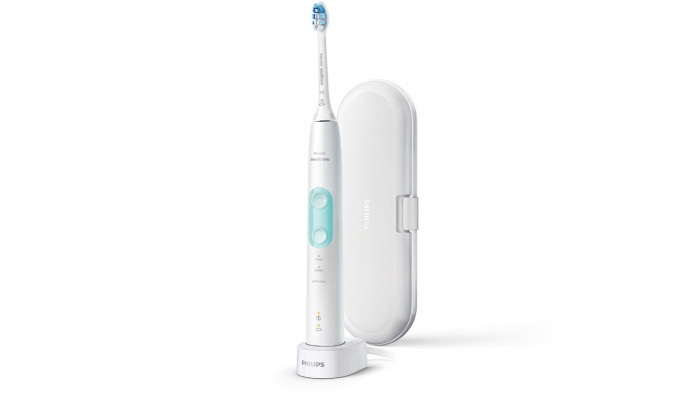
The sonic Philips Sonicare ProtectiveClean 5100 has the same maximum power as the 6100, the same three cleaning modes (clean, white and gum) and the same standard travel case. However, this model doesn’t have adjustable power settings and its BrushSync technology only tells you when it’s time to change a head, and it can’t set the correct mode automatically. A pressure sensor and brush timer are built in.

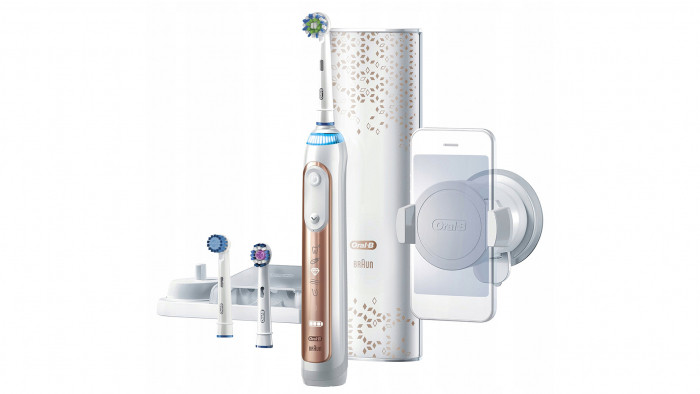
Our best overall toothbrush, the oscillating Oral-B Genius 9000 is the most powerful. It has six cleaning modes, from pro clean to gum and tongue care, comes with four brush heads, a travel case and a handy dock/charger for your sink. The brush has a built-in pressure sensor and brush timer. It can connect via Bluetooth to your smartphone with the app giving you brushing lessons.

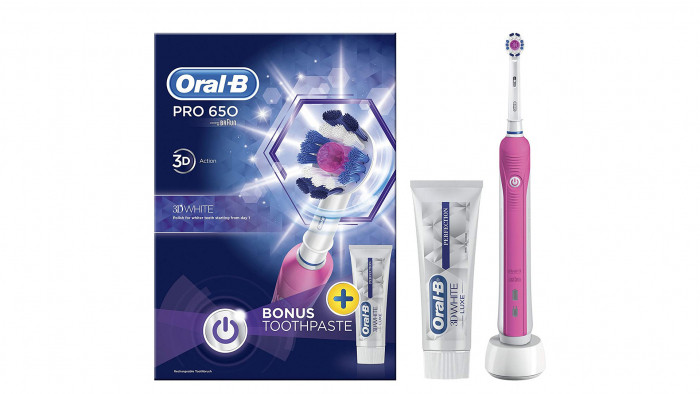
The Oral-B Pro 650 3D White ships with a whitening toothbrush head, designed to polish your teeth. To further the effect, there’s a 75ml tube of Oral-B 3D White Luxe 75ml toothpaste in the box. The brush handle has a single daily clean mode and a built-in brush timer.

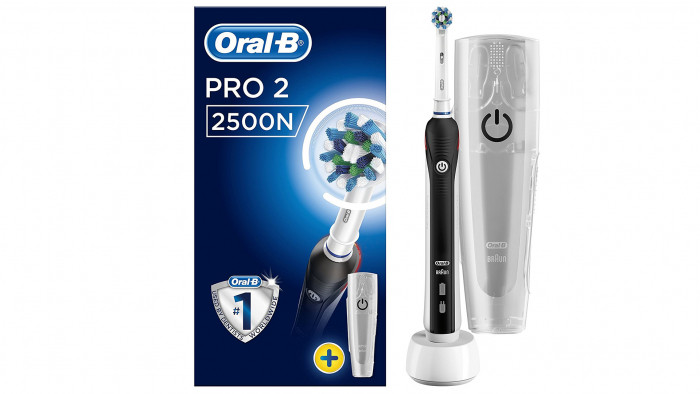
The oscillating Oral-B Pro 2 2500N is a standard, basic brush. It has two brush modes (clean and gum care) and a pressure sensor that lights up the LED if you press too hard. The box contains one CrossAction brush head and a standard hard travel case, and the body has a built-in brush timer.

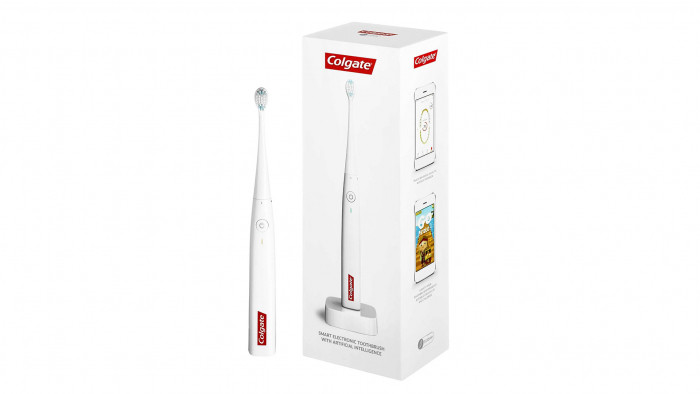
The Colgate Smart Electronic Toothbrush E1 is the first toothbrush sold in Apple Stores. This sonic brush can connect, via Bluetooth, to your smartphone where the app can train you to brush better or engage you with some games. You get two brush heads in the box.

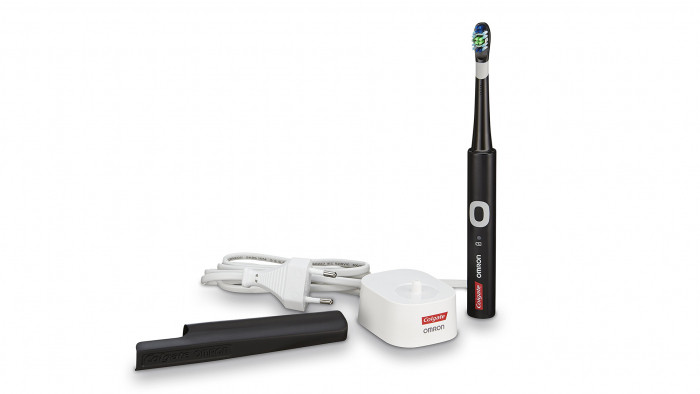
The sonic Colgate ProClinical 250+ has a smart brush head – one side’s for your teeth, the other side’s to keep your tongue clean. Thanks to the clever cap, you can protect your brush head when not in use and it acts as a makeshift travel case, too. It also has a built-in brush timer.
After testing ten models, we settled on the Colgate Omron ProClinical 250+ as our best value electric toothbrush, with its smart design and low cost proving to be clear winners. The Oral-B Genius 9000 is our best overall electric toothbrush. With tonnes of power, plenty of brushing modes and an array of brush heads and accessories, it really is the best way to keep your teeth clean.
The Expert's View
Best electric toothbrushes: how we selected
One of the main considerations when buying an electric toothbrush is the ready availability of replacement brush heads. Typically requiring a change every three months, brush heads are something you’ll go through at a greater rate than you will toothbrush bodies. That means being able to get hold of the right brush heads quickly and cheaply becomes a huge part of the buying decision.
The choice of brush head styles and cleaning modes are also important factors. If you have sensitive teeth, then a sensitive brush head and cleaning mode is critical. If you want whiter teeth, a whitening brush head and cleaning mode is the one for you. Our goal was to test a range of products from standard entry-level models all the way up to those with multiple modes and brush heads.
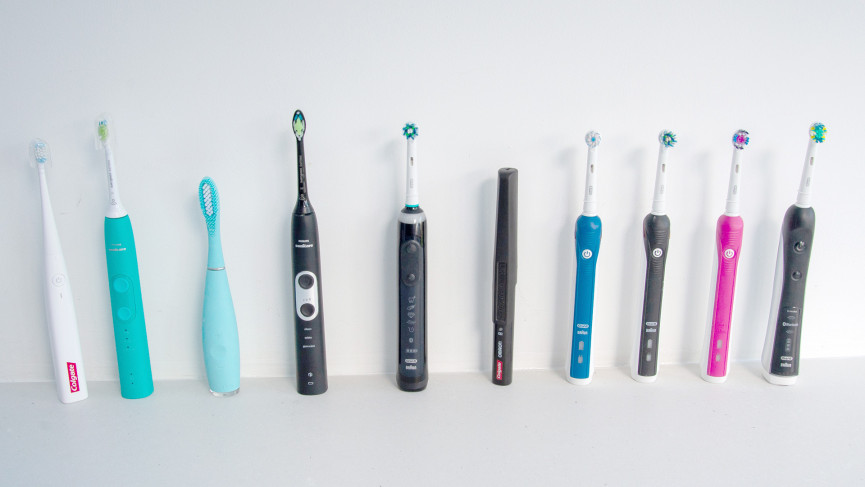
Our test is largely dominated by Oral-B products. The brand’s brush heads are widely available online, on the high street and at supermarkets, while its range of products also satisfies different budgets. Wherever you like to shop, Oral-B is the one brand you consistently see everywhere. It’s no wonder these combined factors ensure Oral-B dominates the Amazon top seller list as well.
Oral-B also represents one type of electric toothbrush technology: oscillation. The technology uses a combination of rotation, vibration and pulsation to make the brush move. Oscillating toothbrushes are typically good at plaque removal, although some people find the brushing action a little too harsh.
Because of Oral-B’s dominance, we tested a large range of its products, as we felt this truly represents the market and what people are actually buying. So you’ll find five in this roundup: the Oral-B Genius 9000, Pro 2 2500N, Pro 2 2000S, SmartSeries 6500 and Pro 650 3D White.
Following Oral-B is Philips with its Sonicare range. Not quite as widely available as Oral-B, Philips is still a massive brand you’ll find in many shops and consistently appearing on bestseller lists. Its toothbrush heads are stocked in larger supermarkets and pharmacies, but also readily available online, making replacements easy to source.
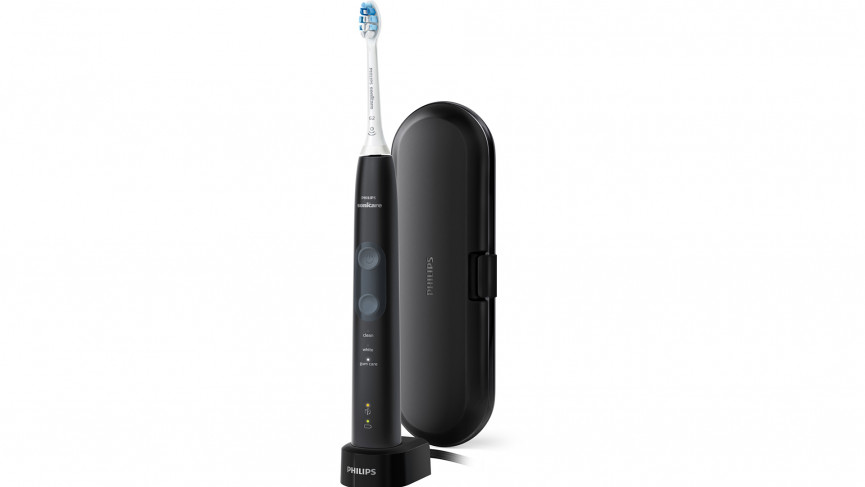
Philips is also the main proponent of the alternative electric toothbrush technology: sonic. Sonic toothbrushes vibrate very fast. This vibration moves the brush head, helping remove plaque and dirt on the surface on your teeth. The vibration also pushes fluids from your mouth into hard to reach areas, so you get cleaner results even where the brush head doesn’t touch. Some people don’t like the sensation sonic toothbrushes create. Both oscillation and sonic toothbrushes produce roughly the same cleaning results, though models using each type of cleaning method will vary.
Philips doesn’t have quite the same range as Oral-B, with more emphasis on higher-end models. For that reason, we’ve got two models in this test: the Sonicare ProtectiveClean 6100 and Sonicare ProtectiveClean 5100.
While it is fair to focus on the biggest sellers, as that’s what most people buy, there are of course alternatives. Part of our selection includes brushes that offer something different to the main brands to see how they compare. Our selections stipulated that replacement brush heads had to be easy enough to source so we ignored some smaller brands for this reason.
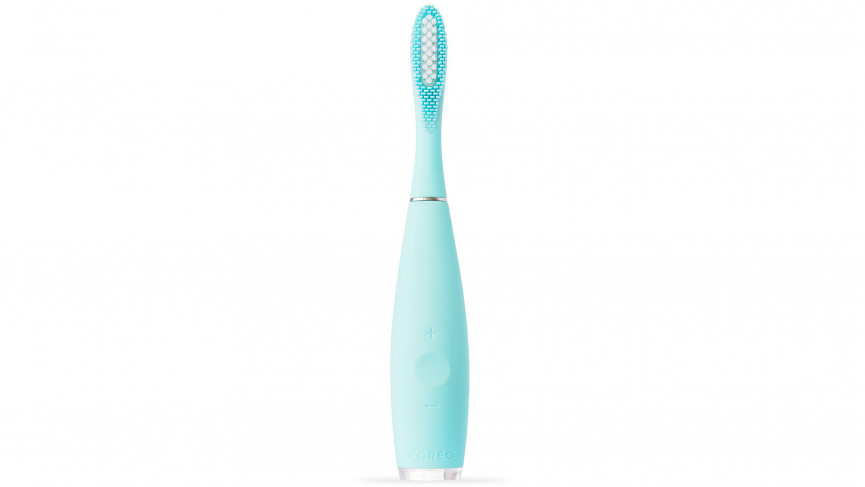
Our research led us to three additional toothbrushes. The Foreo ISSA 2, as it has a radically different, futuristic design, with year-long battery life and brush heads designed to last six months.
We also included two models from Colgate, as its toothbrushes are growing in popularity thanks to the backing of one of the biggest toothpaste brands. We picked the Colgate Omron ProClinical 250+ because of its low price, while the Colgate Smart Electronic Toothbrush E1 has some interesting smart features, interesting enough to see it stocked in Apple stores.
Battery life wasn’t something we particularly focussed on. All the brushes we tested tended to last around two weeks on a single charge, although the number of cleans (and the modes you use) per day and how hard you press will affect this.
Best electric toothbrushes: how we tested
Quality electric toothbrushes should clean efficiently and well. To maintain consistency we tested the toothbrushes on a set of plastic model teeth normally used to help train dentists. This meant we could maintain the same testing across all brushes to really compare performance.
The set is mounted into a realistic jaw and is hinged at the back just like a real mouth. It contains a full set of adult teeth, complete with gaps at the back. We simulated dirt by loading in two different types of mess.
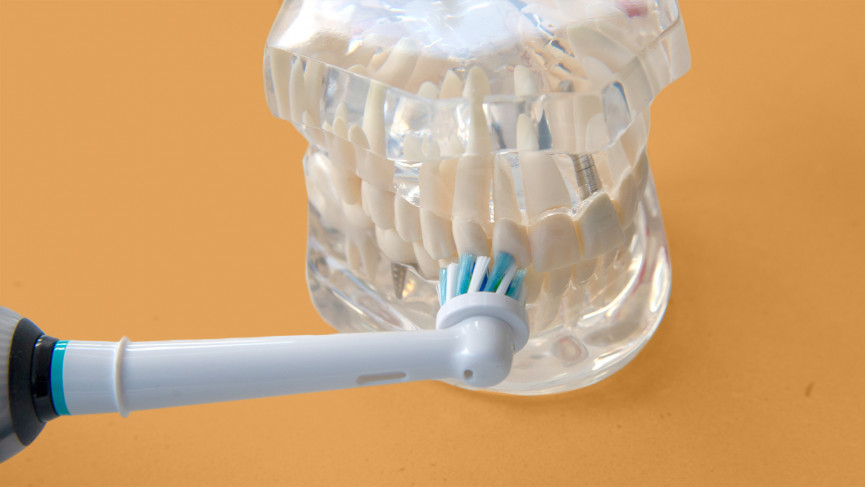
First, we took a baby spinach leaf and tore it into small strips. We then dipped the strips in water and rolled them up. These were pushed into the gaps in the teeth on the left-hand side at the back. We also loaded up some softer debris, with a quarter of a pickled beetroot slice crushed between the right-hand side teeth. We made sure the beetroot worked its way into the gaps and was pushed around the teeth.
Once our crash-test teeth were loaded with food, we used each toothbrush with the standard head it ships with, picking the regular cleaning brush if multiple heads are provided.
Where a brush has a two-minute timer with 30-second intervals, we used that as a guide, spending the same amount of time on each quadrant. Where there was no timer, we set 30-second timers to achieve the same thing.
To simulate the teeth-brushing action, we held our test teeth open to the same degree that a mouth opens, and turned them around so they faced away from our body. We then used minimum pressure and gently moved the brush around. At the end, we examined the teeth carefully to see how much debris was removed. And we noted during our tests how easily debris came away: did the toothbrush gently pull everything out or did it take a lot of effort?
Of course, electric toothbrushes are about more than just performance. So we also used each toothbrush on ourselves to see how each one handled, how clean our mouth looked and felt, and how gentle or rough each brush was. In all cases we ensured that brushes were out of their initial trial setting – many brushes slowly increase power to give you a chance to get used to them. Where additional brushes and modes were available, we tried these out, too, from whitening modes to tongue and gum care.
During the standard rush mode, we used a decibel meter to take sound recordings from each brush to see how loud they are. We took notes on the pitch of each brush, too: some quieter brushes sound more annoying than those that are technically louder.
The range of accessories available is also important. So we took into account what ships with each toothbrush, checking out the quality and usefulness of additional parts such as travel cases (particularly those that can charge on the move), brush holders, and the range of brushes supplied.
Best Electric Toothbrush Reviews: The test results
All of the electric toothbrushes we tested are capable, to some degree, of cleaning teeth well and represent a step-up from using a manual brush. However, there are clear differences between the best and worst on our list.
At the top of the pile are the most powerful toothbrushes, the Oral-B Genius 9000 and Oral-B SmartSeries 6500, and the Philips Sonicare ProtectiveClean 6100 and Sonicare ProtectiveClean 5100. Using all of these brushes on our test teeth, we found food debris was effortlessly removed from gaps and beetroot was gently polished away. Most importantly, none of these brushes required any effort to use – just gently gliding them across our test teeth did the job.
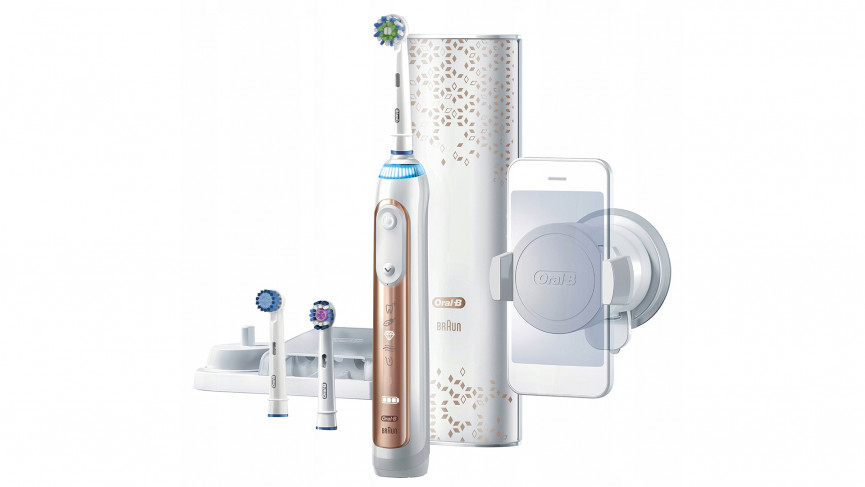
Less powerful brushes, or those with a softer head, such as the Colgate ProClinical 250+, struggled a bit to get the dirt out. We found we had to focus a little more on tougher areas, such as gaps between teeth, to really pull out the dirt. We made allowances for those brushes with sensitive brush heads, as cleaning performance is slightly downgraded to allow for a more gentle clean, as with the Oral-B Pro 2 2000S.
Testing on ourselves, we looked for ease of handling, the range of options and the overall feel of the final brush. Top of the class was the Oral-B Genius 9000 and Philips Sonicare 6100. We found both easy to handle, leaving our mouth feeling fresh and clean. We liked that both brushes featured multiple modes, such as for cleaning our gums with a more gentle brushing pattern for greater levels of hygiene.
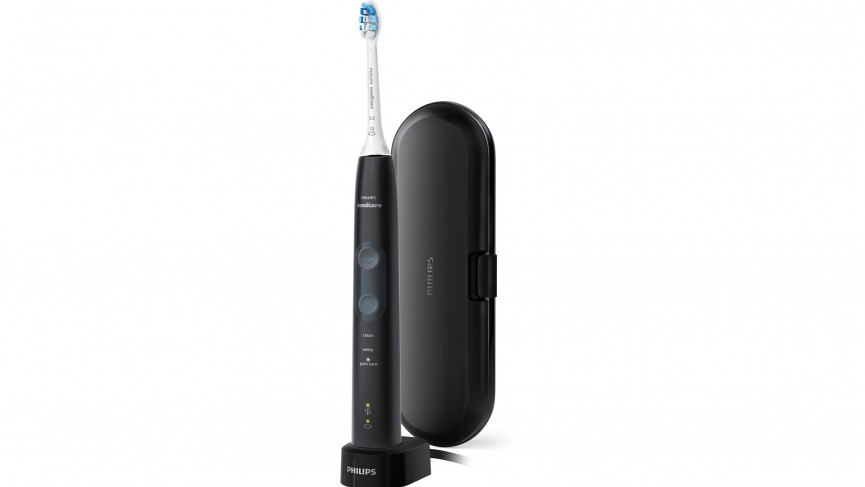
The Sonicare ProtectiveClean 5100 has a similar brush performance to its big brother, but lacks the option to adjust intensity. Likewise, the Oral-B SmartSeries 6500 has similar cleaning performance to its larger sibling, but the lack of indicators on the brush made it hard to work out which mode it was in.
The cheaper Oral-B Pro 2 2500Nand Pro 2 2000S have dual cleaning modes (clean and sensitive), but the Pro 650 3D White is let down slightly by having a single mode only.
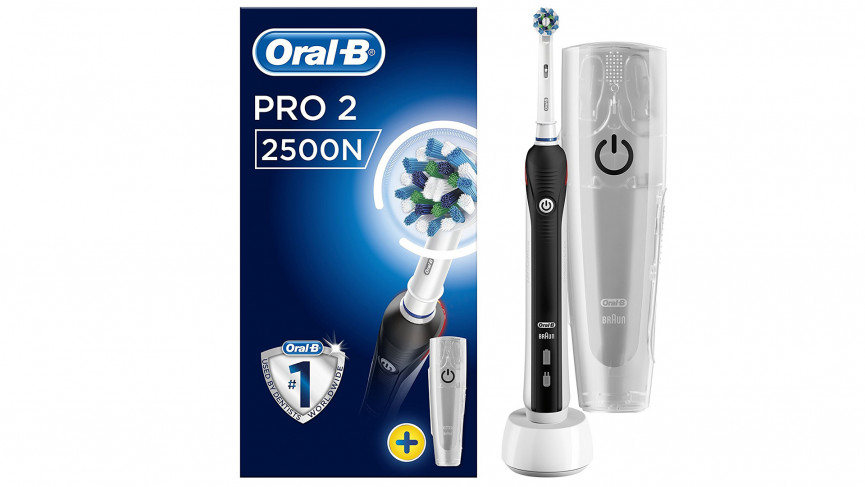
There’s a lot to be said for manoeuvrability. All of the brushes were small enough to get around our mouth and between teeth, bar the Foreo ISSA 2. Its very large head feels a bit strange in the mouth, making it hard to get right to the back; it’s not a brush for everyone.
The Genius 9000, SmartSeries 6500 and Colgate Smart Electronic Toothbrush E1 all have smart capabilities with apps to help you achieve better results by tracking where the brush is. These apps tend to be fun for the first clean or two, but soon become more of a hassle.
We much preferred brushes with real-time feedback and all of them had a minimum of a two-minute timer, with 30-second pulses to help you know when to move to a different quadrant.

Brushes with pressure sensors are excellent and the Philips Sonicare models performed best here, giving a pulse through the brush handle to let you know to be a bit more gentle. Oral-B uses a red light on its models (bar the Pro 650 3D White, which doesn’t have a pressure sensor), which is harder to see. Colgate and Foreo don’t have pressure sensors.
The noise levels generated by an electric toothbrush probably aren’t a deal breaker, but in our tests the oscillating models from Oral-B were a lot louder than their sonic rivals. The top-end Genius 9000 was really loud, and its low-level vibrating motor was harder to hear over. The sonic brushes all feature a gentle vibration, closer to an electric shaver.
The best electric toothbrush reviewed
Oral-B Genius 9000 review, £78.99
If you want a high-quality electric toothbrush that does pretty much everything – and comes with a host of extras – the Oral-B Genius 9000 is the one for you.
The array of icons on the front of the brush lets you know this baby means business, with a tonne of cleaning modes. There’s a standard clean (confusingly, this has no icon), Pro Clean for intense brushing, Sensitive mode for a gentle clean, 3D White (that’s the diamond) for polishing your pearlies, Gum Care for gently massaging around your teeth, and Tongue Clean.
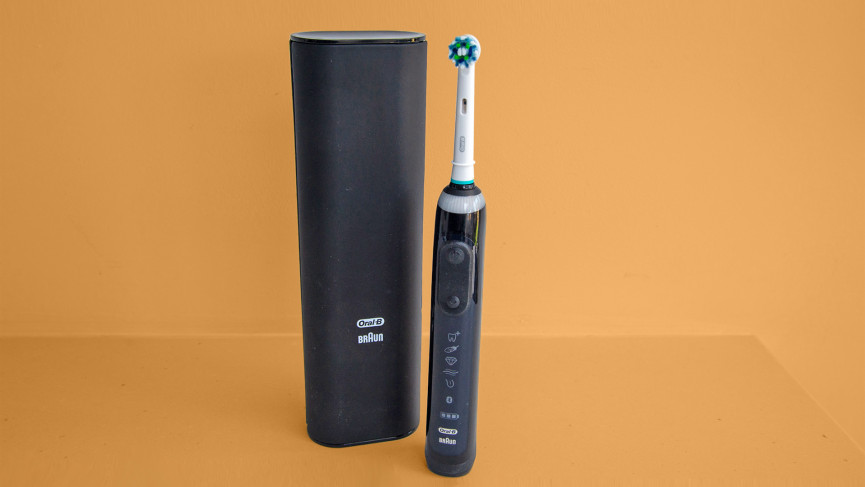
Sadly, the icons don’t always make a huge amount of sense: the tongue symbol is obvious, but you’d have to guess what the diamond meant and you’ll need to refer to the manual to decipher what the options are.
Cleaning modes are one thing, but having the right brush heads to match the modes is just as important. Fortunately, Oral-B provides a good selection in the box including two CrossAction heads for everyday cleaning, a 3D White brush head with a polishing cup, and a Sensi Ultrathin for sensitive teeth and tongue cleaning. Standard brushes last around three months, with replacements a reasonable £11 for a four-pack.
Cleaning modes generally last for two minutes, with 30-second pulses letting you know when it’s time to change quadrant; some modes last a little longer, such as the three-minute Pro Clean.
You get a stand to put the brush heads in, which the charger clips neatly into as well. It’s also nice to see a travel case with a charging option, so you can keep your toothbrush topped up when you’re on holiday. The case plugs into a standard electric razor point, which is a shame, as a standard USB plug would have been more convenient. There is a USB port on the case but this is just for charging other devices, such as your phone.
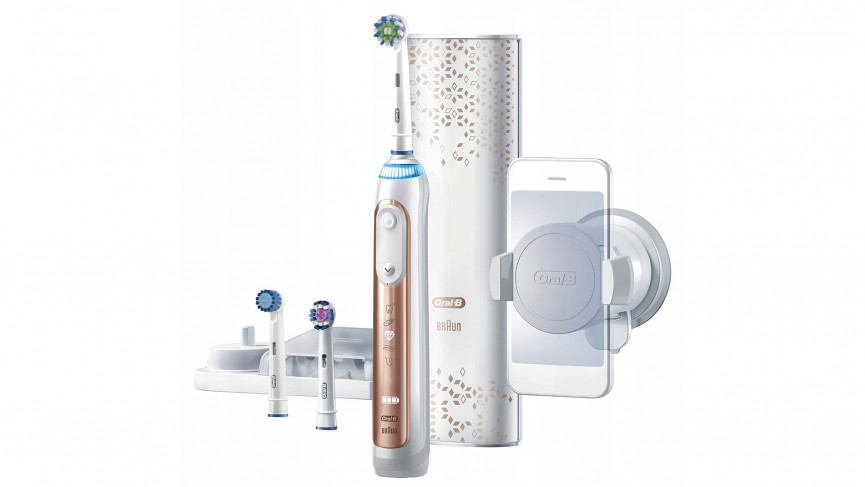
All of these features are great, but it’s cleaning performance that counts and the Genius 9000 has plenty of power. In fact it’s such a powerful brush that it takes some getting used to and you can really feel it working away at your teeth. Don’t be surprised if you suffer a bit of light gum bleeding while you get used to the brush, and pay attention to the pressure sensor, which will turn on the LED strip at the top if you push too hard.
On our test teeth, the impressive rotating action pulled out debris stuck in gaps and polished away the soft beetroot, leaving no trace of mess behind. Our teeth felt smooth and fresh after using the Genius 9000 on ourselves but the downside is noise, because with a low mechanical growl the Genius 9000 is pretty hard to hear over while brushing.
To help you brush better, the Genius 9000 can connect via Bluetooth to your phone, with the app showing you where to focus your efforts. There’s a stick-on phone mount, so you can place your handset on a mirror. While the app offers some decent advice, the tracking, which uses your phone’s camera, isn’t so good and quite often thinks that you’re cleaning a different part of your mouth.
We gave up on the app but continued with the Genius 9000, as it’s an excellent electric toothbrush. Given the range of cleaning modes and accessories, it’s surprisingly good value for a high-end model, too.
The best electric toothbrush for value reviewed
Colgate Omron ProClinical 250+ review, £15.50
At a shade over £20, the Colgate Omron ProClinical 250+ sonic brush is one of the cheapest. If you don’t want to spend a fortune on a toothbrush but are still after excellent cleaning performance, this is the model for you.
It’s a little bigger than an old manual toothbrush, but simplicity is the name of the game with the ProClinical 250+. Cleverly, it ships with a cap that clips over the top of the brush head, letting you slip the entire electric toothbrush into a bag for travel. And the cover slips over the power button, preventing your toothbrush from turning on whilst in your luggage. You’ve got to applaud the thoughtfulness of this design.
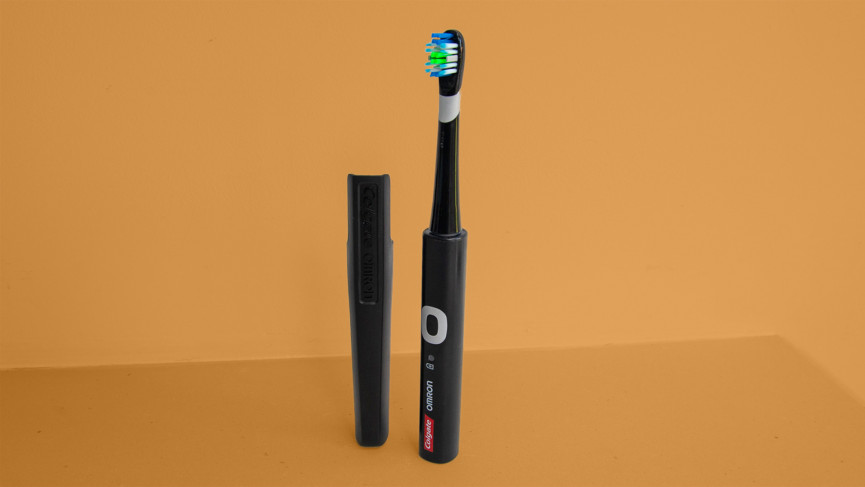
Practicality shines through with the rest of the product. The brush head is one of the smartest that we’ve seen. The main brush side has long bristles that move into gaps, while a polishing cup in the middle tackles stains. Flip the brush head over and there’s a set of silicone bristles for tongue cleaning.
Brush heads should last approximately three months each and cost in the region of £9 per pack of four, which is as reasonably priced as the main toothbrush.
While the toothbrush may be low-cost, its cleaning performance is high-end, and it’s good to see a two-minute timer with 30-second pulses letting you know when it is time to change quadrant. The brush slipped between the gaps on our test teeth well enough, although as the head is a little soft it took a bit more effort to coax out the spinach.
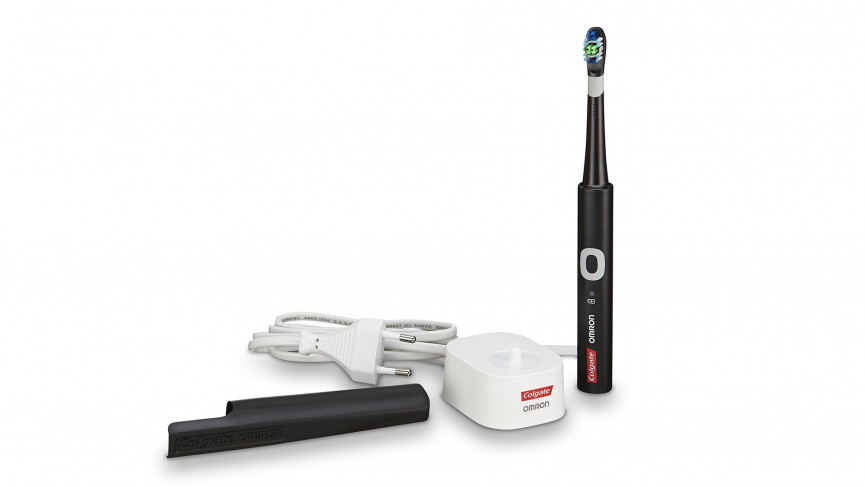
When dealing with beetroot, the toothbrush polished away all bar a tiny amount of mess. It’s nothing a second going over didn’t fix, and everyday cleaning will be fine with this model.
Using the ProClinical 250+ on our own teeth, the head was a little soft for our liking, and the 30,000 brush movements per second are a touch off the pace of the higher-end models, such as the Philips Sonicare 6100. As a result, we had to focus the brush head on a few areas to really get a proper clean. That said, in the end, our teeth felt clean and our mouth was fresh.
The upside of the sonic technology is that this toothbrush is very quiet at just 61.6dB, so you can still hear what’s going on around you.
Up your budget and you’ll get a toothbrush with more modes and increasingly effortless cleaning. If you want to keep your spending down or just want a basic brush for travelling, it’s hard to fault the Colgate ProClinical 250+.
Comparing the rest on test
The higher-end the toothbrush, the more modes it generally has – and the more complicated it is to use. Special mention has to go to the Philips Sonicare ProtectiveClean 6100, which uses BrushSynch technology. When you attach a brush head to the body, the 6100 automatically selects the best cleaning mode and power setting, although you can also set the power manually using the three options. BrushSynch also monitors the way you use the toothbrush and lets you know when it is time to change brush head.
The Sonicare ProtectiveClean 5100 has the same powerful body, but you can’t change power modes and the BrushSync technology here only tells you when it’s time to change brush head.
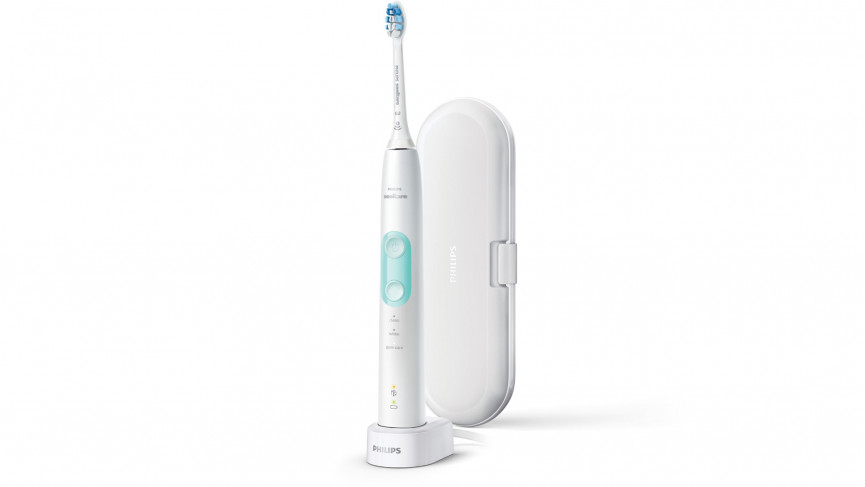
With the Oral-B Pro 2 2500N and Pro 2 2000S, you get two cleaning modes: standard and sensitive. Pressing the power button twice is enough to cycle through them. The Oral-B Smart Series 6500 complicates things, as it has six cleaning modes but no indicator, so you need to have the manual to hand to find out how many button presses it takes to get to the mode you want.
You get 16 intensity settings with the Foreo ISSA 2, but no indicator to tell you which one you’re on. Plus, there’s very little difference between each setting; fewer options would have been better.
All these toothbrushes bar the Foreo ISSA 2, Colgate Smart Electronic Tooth and Oral-B Pro 650 have pressure sensors that let you know when you’re pressing too hard. We prefer Philips’s implementation, which vibrates the entire brush; with Oral-B you get a red light, which is a bit harder to spot.
We can’t fault the Foreo ISSA 2 for battery life, though. A single charge is designed to last an entire year. That means you’ll rarely have to charge it and can travel without anxiety. It’s also the coolest-looking and sports the most futuristic design.
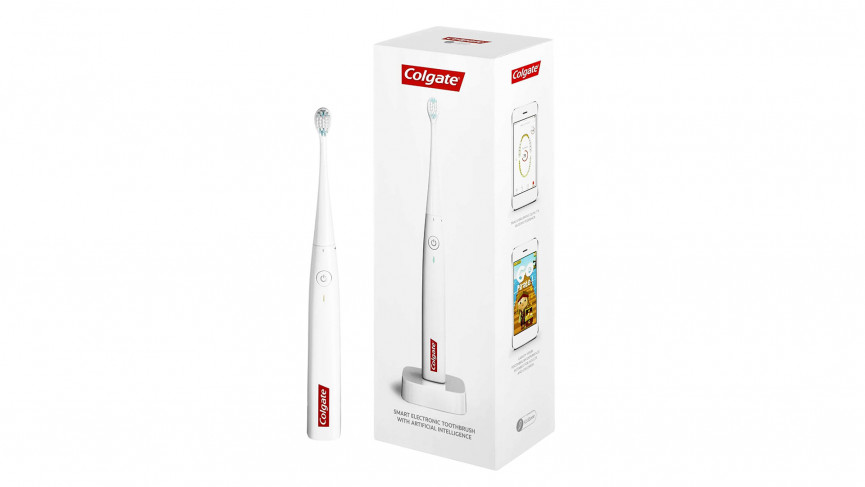
The Colgate Smart Electronic Toothbrush E1 and Oral-B Smart Series 6500 are both connected toothbrushes. With Colgate that means you get an app to help you brush, complete with games and brushing guides. The toothbrush lost connection a few times when testing, though.
With the Smart Series 6500, you can use the same app as on the Genius 9000. It’s interesting the first time but we stopped using it. The Wireless SmartGuide is more useful. This waterproof clock shows you a timer and indicates which quadrant you should be brushing. It also shows you the brushing mode you’re in – something that should really be on the brush body.
All the electric toothbrushes we tested did a good job in our cleaning tests. The Philips Sonicare ProtectiveClean 6100 and 5100 are the most powerful brushes, with their heads effortlessly cleaning out dirt and leaving our teeth feeling clean. They’re followed up by the Oral-B Smart Series 6500, which is only slightly less powerful than its big brother, the Genius 9000 – we prefer the more expensive model for its mode indicator.
We found the brush heads on the Oral-B Pro 2 2000S (a sensitive model) and Colgate E1 a little soft, requiring a bit more work to get our teeth really clean. The Pro 2 2500N has great cleaning performance for the price, followed up by the budget Pro 650 with its whitening brush. The Foreo ISSA 2 is capable of decent cleaning, although its brush head is really large, making it hard to manoeuvre.
Are there any electric toothbrushes to avoid?
All of the toothbrushes we tested are capable of cleaning teeth well. Differences come with the price and who the brush is aimed at. More expensive, high-power brushes clean easier, while low-cost models or those aimed at people with sensitive teeth take a bit more work.
Ultimately, it comes down to budget and whether or not you have sensitive teeth, therefore requiring a softer head.
We recommend looking at the performance per price and don’t necessarily be dazzled by cutting-edge features. For example, the Colgate Smart Electronic Toothbrush E1 looks great and offers decent cleaning performance, but you’re largely paying for smartphone integration, which very few of us actually need. If you want a training brush and to learn more about cleaning your teeth better, it does a good job, but look elsewhere on our list and you’ll find better choices for less money.
Latest
Related Reviews and Shortlists


Best gifts for runners that they'll actually want and use

